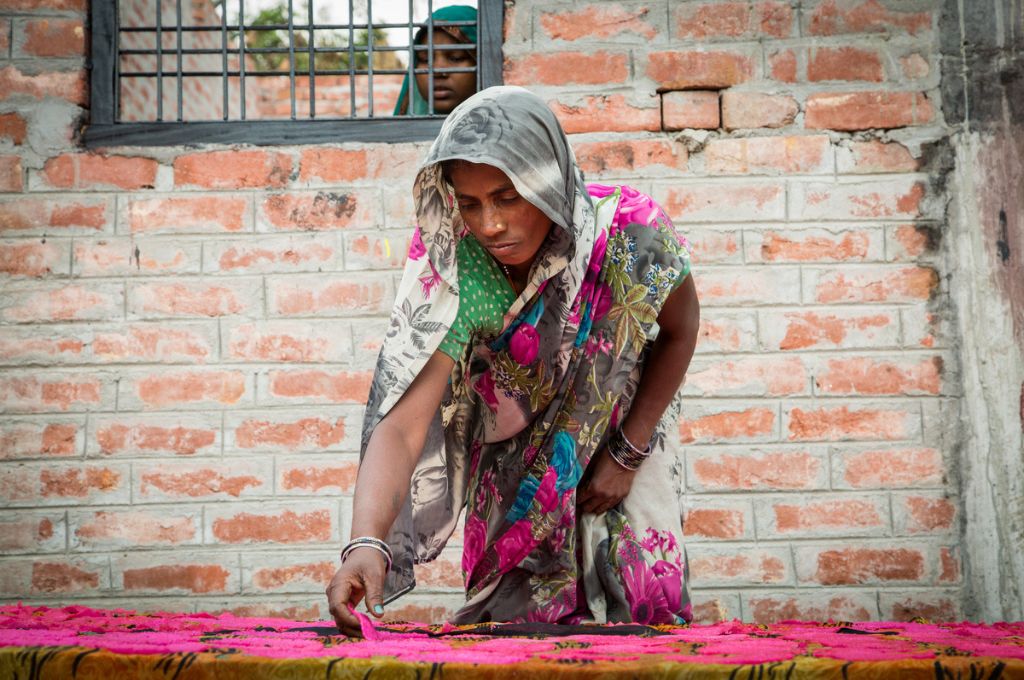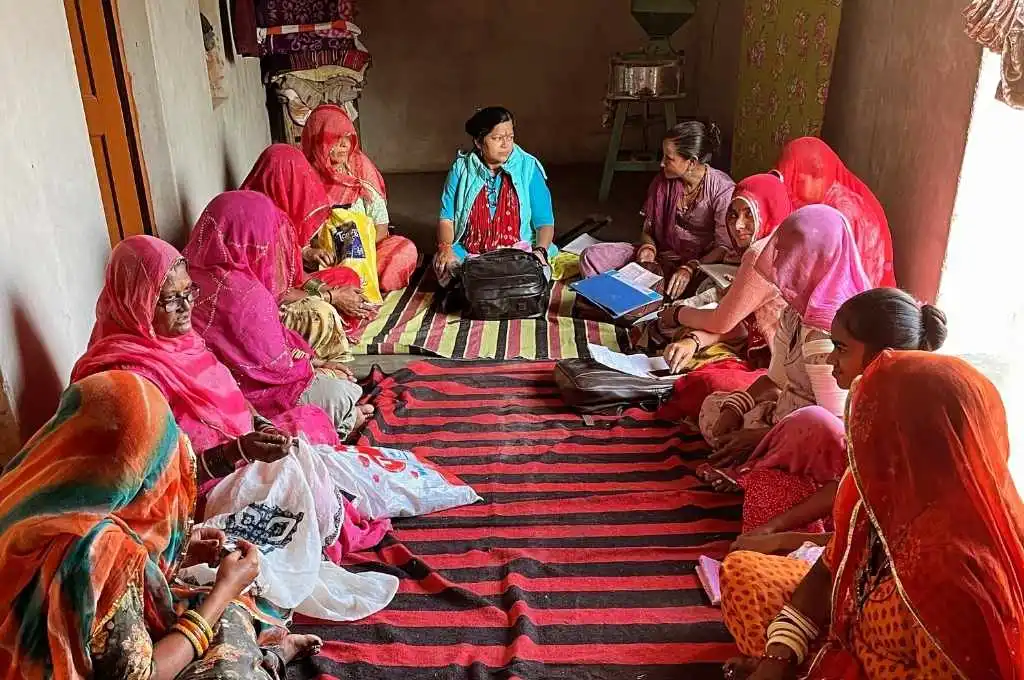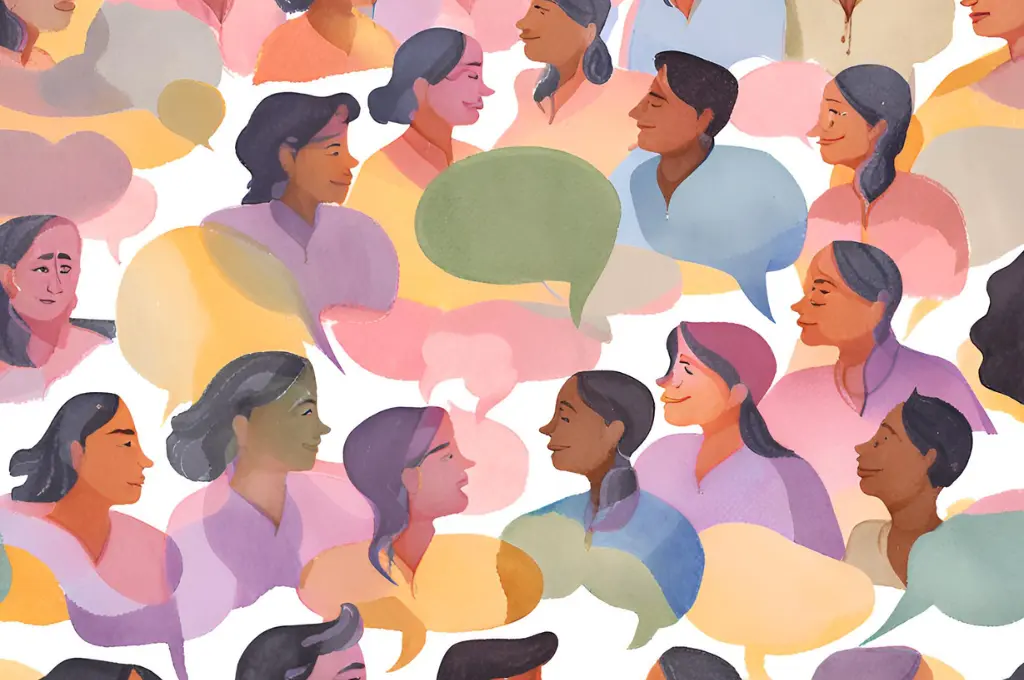Edited transcript of the episode:
0.27
Saloni: Indian women have been dropping out of the workforce for years. For three decades since liberalisation, the female labour force participation rate, or FLFPR, has been dipping. It reduced from approximately 30 percent in 1990 to approximately 17 percent by 2018.
There was, however, a hope-filled uptick recently when the government released the results of its Periodic Labour Force Survey, or PLFS, an annual exercise started in 2017. According to this data, our FLFPR recently rose to 37 percent. That sounds like good news, but is it really? Our three guests this week have studied the issue closely. They help us unpack the data and look at the real story of Indian women and paid work.
First, we turn to Namita Bhandare. Namita is a journalist who has written about gender issues for a long time. She started looking at women’s participation in economic activity as early as 2017. Her series on women at work with IndiaSpend won a National Award. She walks us through what the recent data on FLFPR tells us, and what it hides.
1.52
Namita: I have seen now, in a post-Covid world, the data varies from anything between 9 percent, [according to] CMIE [Centre for Monitoring Indian Economy]—a very respected think tank that publishes regular data on female labour force participation—and 35 percent, according to the latest PLFS, which is the periodic labour force survey. Regardless of who you choose to believe, I think the important thing is looking at the trend, looking at where we’re going. And the fact is that [as far as] labour force participation [is concerned] I accept the PLFS data because I have no reason to dispute it. I accept it, that female labour force participation is actually at its highest ever in the last five years. But when you’re past the PLFS data, and you say, “Well, where are these women seeking employment? Where are they employed?” So the big bumps are number one, rural India, and number two, self-employed [women], or what they call ‘own account’. This means that if I am sitting at home and rolling agarbattis, and stuffing them into packages and earning INR 100 a day for this labour, I am regarded as employed. If I’m rolling papads in my house, I am regarded as employed. So what has actually happened in a post-Covid world is that economic distress [and] the unemployment has led to women coming back into the workforce at any salary and doing any kind of work to supplement the household income—that is a bigger story than the data.
03.37
Saloni: Namita refers to the economic think tank CMIE or the Centre for Monitoring Indian Economy. For 2022–23, CMIE pegged female labour participation at less than 10 percent.
For more on how to read the data, we speak with Shrayana Bhattacharya. Shrayana is an economist and the author of Desperately Seeking Shah Rukh Khan. Her book tracks the economic journeys of women from different regions, age groups, and classes. Shrayana tells us how she interprets the dips and hikes in the FLFPR.
4.15
Shrayana: Since the pandemic, particularly the past four or five years, we’re seeing this increase [in female labour force participation], largely driven by rural areas; I think that’s very important. The urban difference has actually stayed fairly similar; there’s no big increase there. And if you start to slice the rural data and look into it very carefully, you realise that the increase is largely because of self-employment. And in fact, it’s [due to] unpaid family workers, which one would argue is not a very substantive, meaningful, qualitative shift in jobs.
4.53
Saloni: Both Shrayana and Namita point out that the FLFPR has gone up because rural women are resorting to self-employment in times of economic distress. Our third guest Sharon Buteau has worked closely with many women entrepreneurs. Sharon is associated with the Institute for What Works to Advance Gender Equality, or IWWAGE. Based on her research and experience, Sharon sheds light on the landscape for women entrepreneurs in India.
05.23
Sharon: India is historically a country of nano entrepreneurs by and large. For women in particular though, they all coalesced into this very small category [of] a turnover of INR 3 lakh and below [annually]. Compare this with men: In the spectrum of [an annual turnover of] up to INR 10 lakh for both men and women, there are fewer men in the below INR 1 lakh [annual turnover category]. And then there are more and more [men] up to INR 10 lakh. [For] women, it’s the opposite—there are a lot in the less than INR 1 lakh category. And they’re typically fewer and fewer in the higher categories. Women are stuck in that small category.
When you look at the data as well, you see that for most of the enterprises, women are as productive in terms of profit as men; [however,] women tend to get approximately half of the loans, the credit that they do.
06.20
Saloni: So, while more women are starting their own enterprises to climb out of financial holes, women entrepreneurs are unable to grow adequately. Not much to celebrate there.
Here’s a tidbit: On October 9, 2023, the day the government gave us the FLFPR, many feminists were celebrating, but for other reasons. They were happy to hear that the Nobel Prize for Economics was given to Claudia Goldin, the first woman economist to win the prize solo. Namita, Shrayana, and Sharon were among those overjoyed to hear the news because Goldin’s work focuses on exactly the issues we are discussing today: employment and pay for women.
Her U-shaped curve function states that women’s labour force participation does not grow proportionally when the per capita GDP first starts increasing. With economic growth, the FLFPR declines initially. After the initial dip, when the per capita income continues to increase, the FLFPR increases, generating the U-shaped graph.
Here we have Namita reading India’s FLFPR data in the context of Goldin’s work.
07.40
Namita: Claudia Goldin, who won the Nobel Prize this year, [has] spent her entire career documenting how and why women drop out of the workforce. In India, of course, we did not have the U curve that she talks about, which [signifies that] in most developed economies, women will drop out. Factory work leads to women dropping out of the labour force. But then as the services industry picks up, women rejoin. Now, in India, we’ve only seen a downward decline. We have not seen an upward trend—until now. This is, as I said, the self-employed own account, very low-paid work that women are accepting out of desperation. So I would not necessarily see this as good news. I don’t think we can celebrate the numbers going up, because the numbers are going up for very dire reasons. And once household incomes bounce back, or the economy bounces back, as the government says it will, I anticipate these women would drop out for the same reasons that they had dropped out in the first place. Because on the ground, nothing has changed.
08.46
Saloni: Shrayana agrees that, on the ground, it’s more of the same. And it’s discouraging.
08.52
Shrayana: To use the phrase that our recent Nobel Prize winner in economics Claudia Goldin uses, ‘the revolution happens when jobs become careers’. She says that the biggest thing that shifted in America was not actually the period when the labour force participation rates of married women in particular increased, but the biggest qualitative shift, which was the revolution, which is difficult for data to pick up, was when women started seeing their professional identities as being very central to who they were. And then that guided their decisions on marriage markets, on reproductive rights. So many aspects of American society changed with that change in attitude. And if you look at that appetite of young women in particular, who are interested in careers, my sense is, actually, that interest level is very high in India. And I think that’s probably why we have an extremely frustrated female workforce as well, because their talents are not being adequately engaged. So, I read the numbers as alarming still because the gap is just not acceptable by any standards of dignity, or any standards of opportunities, no matter which way the graph is going, up or down. The gap is just too large.
10.20
Saloni: By some estimates, Indian women are 48 percent of the population but contribute to only 18 percent of the GDP. Bridging this gender gap could raise India’s GDP by a whopping 30 percent. So if women are faring well in education, what is keeping them away from paid work, or making them drop out of it? Namita weighs in.
10.51
Namita: Before Covid, there were two cohorts that were dropping out of the labour force faster than the others. The first comprised those who were not literate. And the good news is that they were dropping out of work because many of them were staying on in school. Many of them were actually studying, thanks to a lot of excellent nonprofit work such as by Pratham, thanks to the midday meal, thanks to the cycle scheme, which was a fantastic game changer for girls to remain in school. So girls were studying more and there’s no question that this led to a drop in labour force participation. The second group that was dropping out of work the fastest—very surprising to me, at least—was postgraduates. The most educated were leaving the workplace the fastest. These were engineers, these were doctors. And these were women who were hitting what is called ‘the leaking pipeline’. So the leaking pipeline is a very fancy, nice-sounding academic term, which in a nutshell means that women join the workforce with great enthusiasm, and a great belief that they will do well in their careers, and that they will, in fact, have careers. Then the first bump comes when they get married. So when they get married, there’s a lot of pressure, particularly in India, to a) produce a child, and b) conform to the in-laws’ concept of what a good woman and a good wife does. The second bump comes when she becomes a mother. And she finds it very, very difficult to put in the care work as well as hours in the office. And so if there is a woman, an elder woman at home, either a mother or a mother-in-law to help her, she might stick it out.
12.46
Saloni: Care work includes activities such as cooking, cleaning, and taking care of kids, sick people, or elderly family members. It’s often ignored in policy talks and goes unaccounted for.
12.58
Namita: There was a study some years ago by NASSCOM which very beautifully illustrates this conundrum. And it talks about how mid-career…they compare men and women in the tech industry. So a man will have taken more transfers, he will have taken up more challenging jobs, he will have taken up a foreign assignment, all of which a woman will not have taken up. And so she experiences a plateau in her career. And she says, “I’m not getting anywhere in this job, I may as well sit at home.” And then there’s board exams, then there are parents who are growing older. So all of these are very real challenges for women. And at some point, many would just give up and say it’s not worth it. I can’t do this. Because you know, the fact of the matter is that all women work, but all women are not paid to work.
13.50
Saloni: Shrayana tells us that there are many layers to the challenge.
13.55
Shrayana: Let’s not forget that we still live in a world where marriage is a death sentence, I think, to women’s careers. We want to pretend that that’s not the case. Because we all get very nervous about commenting on marriage. And we don’t want to offend men and our brothers and our husbands and our friends. But all the data tells us that marriage, and in particular caregiving, just kicks women out of the workforce or makes them more precarious in the opportunities that they’re able to access. And this is true as you know from the periodic labour force data, true for not only women with barely any education, but actually even true for women with secondary education or higher education, postgraduate degrees, who tend to be much more prevalent in the workforce. And unless we think very carefully and creatively about the care economy, I don’t think we’re going to solve that problem. And unless we don’t assure young women that you can seek help in your caregiving roles, that there is life without marriage, that marriage doesn’t need to be your full-time job, I think till we don’t socialise women to believe that, it’s going to be difficult.
There is a sense of this triple burden of being unsafe in the world outside, and this is particularly true for women in the north of the country. Feeling unsafe at work, feeling like you have to manage the care role of your house exclusively. And the actual drudgery of regular job routines and office routines, which may not always be fun. I certainly don’t believe all of us have the luxury of having jobs that we absolutely love. I mean, even if we do, there are days that are tough. And navigating the bro club of the office work environment, navigating unsafe travel, or feeling uncomfortable navigating the fact that you will always have to be the one to tell the maid what to cook and when to clean and when to come. That, I think, among our upper middle class creates this sense of drudgery and feeling the chik-chik— that’s the best way to put it. And I think there is this feeling that there’s not an adequate amount of leisure that these women can enjoy, even if they are from a fairly privileged set-up where they can rely on care workers and nannies and cooks and so on.
Our labour programmes, minimum wage laws, and fundamental labour regulations don’t protect some of our most precarious female workers who’re paid a pittance.
So sometimes on the surface, it may not look like [it does] in the movies. The perfect hair and perfect outfits, and everyone’s smoking cigarettes as a sense of how empowered they are. I think it can look far messier than that.
And our first-generation, English-speaking, job-holding middle class… In the book, these are women who are, for example, hospitality workers or women who work in in-flight services, who are often the first in their families to complete an education, to have a job. And for these women, jobs are an adventure. And jobs can be [about] meeting new people, can be [about] meeting new men, can be romance, can be heartbreak, and can be loneliness, can be supporting your father through a difficult health episode, can be buying a property. These are all new facets of personhood that have never been available to these women and their families and that they can suddenly access. And I sense a tremendous amount of anxiety as well as enthusiasm emerging from all those freedoms, so jobs become freedom.
And the last thing I will say where I think it’s a bit mixed in terms of what jobs mean is our precariat. Because you know, our labour programmes and our minimum wage laws and our fundamental labour regulations don’t protect some of our most precarious female workers who’re paid a pittance. And they’re working so tremendously hard that so many of these women would say to me, “I’d much rather just marry someone who has a steady job and opt out.” Their daughters won’t say that, but some of the women in their 40s and 50s might have when they were working a decade ago, or even now. And for them, there is a sense that they will have to work to earn. They don’t even have retirement, you just have to work.
What that working woman looks like and what she feels like, it’s so different and layered in a country as complicated and contradictory as ours. But I do think class has a very huge role to play in mediating it. What I will say is that none of the women I’ve ever met will exclusively just say, “Well, this is all so terrific,” because, you know, the fact is, in a country where 82 percent of the labour income accrues to men, to be part of that tiny minority of women who are receiving that labour income, you are a revolutionary, and being a revolutionary is hard work.
18.59
Saloni: Sharon says that self-employed women and women entrepreneurs also face prejudices and barriers.
19.07
Sharon: Women tend to get about half of the loans, the credit that they [men] do. There could be several explanations, [such as the fact that] they’re in wildly different industries. So when you see men and women, it’s very dichotomic, there’s very little overlap between what men and women do. There are these traditional roles that maybe over time will decrease. But that could explain maybe some years that are less capital-intensive, so the loan [amount taken out by women] can be lower. But I also feel that there’s a mentality when it comes to women entrepreneurs, and I’ve spoken to some agent bankers and they say, “Well, that’s enough for women,” and women tend to believe, they tend to say, “Oh, I don’t need more. That’s enough for me.” It’s kind of like this mentality, it’s just enough, and I’m lucky to get this loan. So the first thing is this mentality of ‘just enough for her’ has to stop. Who is to judge [how much money women can loan]? And it’s really ingrained in the women or the entrepreneurs because these agent bankers will say, “Well, the woman told them themselves,” but who told the woman? [It is the] people in the house or people in the village. How [can it be that for] the same [kind of] business [one of which is owned by a] man and [the other by a] woman, one is just enough loan when it’s half the amount, [but for] the other one, you need more? So the first thing you need to overcome is mentality, social norms. The other thing is, in terms of credit, given that [fewer] women are entrepreneurs—they form approximately 20 percent of the entrepreneurial ecosystem, and the great majority among the 20 percent is a very tiny segment, really all coalesce and [are] not able to grow. So when you look at those enterprises, when they go to other banks and formal institutions given that [mainstream] bankers and financial institutions are not aware of those industries too much, women are at a disadvantage, because the banking agents have less insights into their enterprises.
20.56
Saloni: Here too the odds are stacked against women thriving financially. On the one hand, there are prejudices, and on the other, there are policy challenges. We need to address both social norms and structural issues simultaneously. Shrayana weighs in on the shifts we need to make with both.
21.18
Shrayana: Of late, I have been hearing a lot of this kind of binary building: “Oh, is it social norms that are creating problems for women in the economy? Or is it just a lack of jobs and just the economy?” I mean, social norms, as economists understand it, is an interaction term that essentially overlays everything. Norms overlay everything, they overlay our current interaction, Saloni. They govern all our market behaviour. So while absolutely, we need opportunities. But I think the hard work, which is sadly perhaps not the work of policy, I think policy can help, but the hard work of families changing their minds, and I think that’s happening, it’s happening for sure, or popular culture trying to support women in imagining different lives for themselves, in organising, in movements, in politics…I think all of that is going to be really important, while the technocratic work of hopefully more women and men who think differently about distributing opportunities starts to change in our system.
I think what I’m trying to push against is this binary-making. I don’t think it’s one versus the other. I think it is an interaction, it is both. And you don’t have to keep waiting for norms to change to get more jobs for women and to take affirmative action for women. But at the same time, if we just keep focusing on the technocratic questions, we can’t let men and unfair families off the hook either. And we can’t make it seem like our society is terrific when it comes to women and norms. So we have to acknowledge both with clear eyes.
22.56
Saloni: Namita thinks that while there have been small wins, we still have a long way to go.
23.01
Namita: If you remember, when there was a complete lockdown, and your household help was not able to come, men did pitch in. And Professor Ashwini Deshpande, who has [done] a wealth of work, actually documented how men had stepped up. Men were helping, they were chopping the vegetables, they were washing the bartans, they were doing jhaadu–pochha—they were doing everything they could, because they realised that the wife is also working from home, and there is no one to help her. Plus there was children’s homework because the children were at home, they were not going to school. So they did step up. The bad news is that as soon as everything went back to normal, the men also went back to normal, you know that little bump? But it just tells you, that it’s not rocket science that [if] men want to [contribute to domestic work], they can. It’s a question of a change in attitude.
Political parties, at least, are now paying lip service. You know, so you suddenly have announcements, every government is now tripping over the other, announcing monthly allowances for women, or various schemes. Earlier it didn’t exist, but today everybody is talking about unpaid care work, even if we’re not actually doing things.
Free transport for women has proved to be such a great game changer. Earlier, they would walk. The woman who’s working in homes and households cleaning bartans has already spent four hours working at her own house, and must go back and spend another four hours working again in her own house in the evening, getting the dinner [ready] and doing everything that she did in the morning. So earlier she would walk to work, or she would only accept a job very close to her house because she didn’t have the time or the money frankly to spend INR 20 a day on commuting, and one hour as well. So the time, of course, is still the same, but at least now she doesn’t have to spend the INR 20.
24.51
Saloni: We need more such initiatives. However, the woman’s point of view is missing in policymaking, Shrayana says.
24.59
Shrayana: We just have such masculine decision-making systems when it comes to the economy. I’ll use my own example as one of the most privileged people in our country, even I pay a higher rental premium, to live in a neighbourhood that is safe and that is accommodating for single women to live on their own. And you can just imagine, looking at the stories one hears of domestic workers, factory workers, safe housing still remains a big issue. Now, I would argue there are several things we can do to address the housing crisis for women, particularly single women. You can think of tax incentives for landlords, you can think about subsidies for women, you can think about vouchers or housing vouchers targeted at women. The solutions are actually fairly low-hanging fruit and fairly obvious, Saloni. I mean, many countries have done these things. And many states are also trying to experiment with this. But the problem is, when we talk about the economy and jobs, we have a bunch of men who have the same cognitive map and, sadly, some women who have inhabited that same cognitive map, who seem to think that work is only this growth rate, it’s essentially factories, it’s essentially formalisation. And, you know, we can argue about that. But questions about gendering the housing market somehow falls through the cracks. It’s not a priority.
We have to feminise decision-making systems.
If you just look at states—and in my job, I interact with finance secretaries of many states—most finance secretaries are men. There’s a very gendered way in which problems and policy areas are divided. So to me, I think the problem is, it’s not just creating more opportunities, sure, creating more opportunities for women, but the question is, who will do that? Who will take on the political will and the message around that? Who will be accountable for that? And I think for that, we have to feminise those decision-making systems, we need many more women, not just in corporate boards, but also in our decision-making authorities, labour departments, finance departments, in thinking about firm growth as well. Thinking about jobs and job policies.
27.17
Saloni: Sharon shares a few ideas for tweaks in policy that can support self-employed women.
27.23
Sharon: When we look at things that are perceived as gender gaps and what’s unfortunate [is that] sometimes we look at the acceptance rates of loans for women compared to men. It is sort of related to gender but it’s sort of not. I think it’s related to the fact that there are few women who are prepared to apply for a business plan, just out of sheer low numbers. They lack role models, they don’t have access to the same networks. So the outcome seems to be a gender bias. But I think what can be done is to look to that pathway, and what are the low-hanging fruits that can really help a woman. Like this extra support to help business planning, or checking if the documents might [need to] be differently filled [when] the agent banker says, “No, the documents are not complete”—things like that. I think there’s a lot of low-hanging fruits.
This gender divide, it could be lack of devices, it could be lack of opportunity to use a lot of the internet services. I think things need to be tailored and understood at that level.
So we tend to have put a lot on women in terms of social welfare. The government has given money to women because any money they have, they will invest in their family and education; they’ve been a nurturer of their family. But that comes at a cost. They don’t accumulate wealth. And that also puts them at a disadvantage when they want to get a loan. Because men on the other side, they invest, it’s okay. They accumulate their money, they have a pot of money, they have assets, they have investment. Women do not. So given that too, we put this double burden on women and after[wards] we tell them “Sorry, you don’t have assets, and you don’t have any wealth.” Well, you know, that’s a little bit of a ridiculous situation to be in. So I think we need to think better, especially from the financial system perspective.
I hear stories like oh, women don’t like to take risk. They’re not risk takers. Why should we give them [capital]? Maybe we could look better, deeper into the rationale, the reason, and at what you’re offering them. And to see why they’re not taking up some opportunities that people design for them. And sometimes it is just taking a step back and saying, “Hey, let’s think through this a little bit better.” It’s easier to do it now than in 20 years and then say, “Hey, we forgot.”
29.33
Saloni: This is true. It is better to step back and reconsider what we need to do now than realise later that we blundered.
But how do most women themselves think about work? Based on the experiences of the numerous women Shrayana met for her book, she shares some of her insights.
Shrayana: To be honest, for 15 years, I’ve been talking to different sets of women, particularly mother–daughter pairs. And the one thing I have actually seen is this shift from where the mother would think of work as a job—I just need to earn an additional income—and if you talk to their daughters, for them work is of course income, but it’s income that means something very different. It means freedom. It means a sense of personhood. It means being able to invest and cultivate a personality and their sense of taste when it comes to what they wear, what they like to watch. You know, the things they want to do with their bodies and their minds. And I think the other thing that seems to have really happened is that increasingly I only see women who are interested in trying to make care work much more open and less onerous for themselves. And they’re refusing to be locked into this routine of cooking, cleaning, childcare, and elderly care. I think they want more from life, and they want men in their lives who will share that burden. And I think that’s a really important shift.
What remains with me is this idea that I think all these women are waging their own personal independence struggles. Some are successful, some are not. But I think this is a large struggle that’s going on in almost every home, and more power to it.
31.26
Saloni: Namita says that it is imperative for this battle to wage on. Especially now. And we leave you with her words of caution.
31.35
Namita: In fact, we’re not just not where we need to be, and we should be very careful about a slide back. If you look at what is happening in America and the rollback on abortion rights, if you look at the rise of right-wing governments everywhere, whether in South America, whether in Italy, all over the world, it is worrying, and it tells us that we cannot afford complacency, we cannot afford to assume that it’s always a straight road ahead. In fact, where women’s rights are concerned, it often is two steps forward and one step backward.
—
Read more
- A Statistical Portrait of the Indian Female Labor Force
- Married women’s share in urban workforce stagnant
- What’s going on with India’s female labour force participation?
- Promoting female participation in urban India’s labour force
- Women’s labour force participation in India: Why is it so low?
- Illusory or Real? Unpacking the Recent Increase in Women’s Labour Force Participation in India





